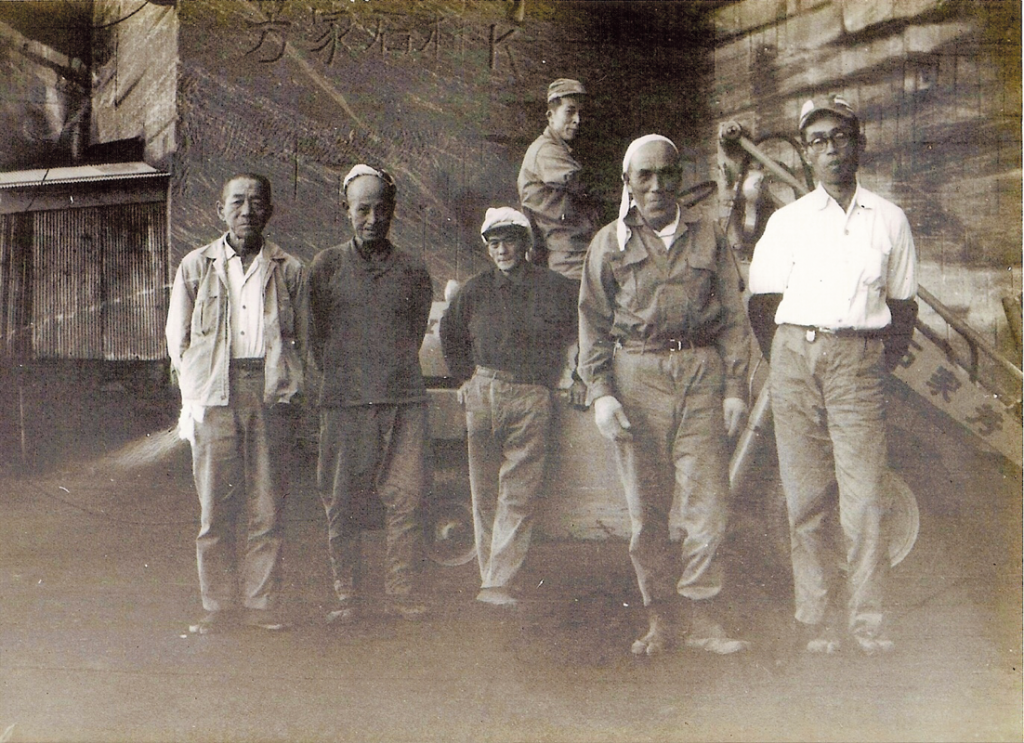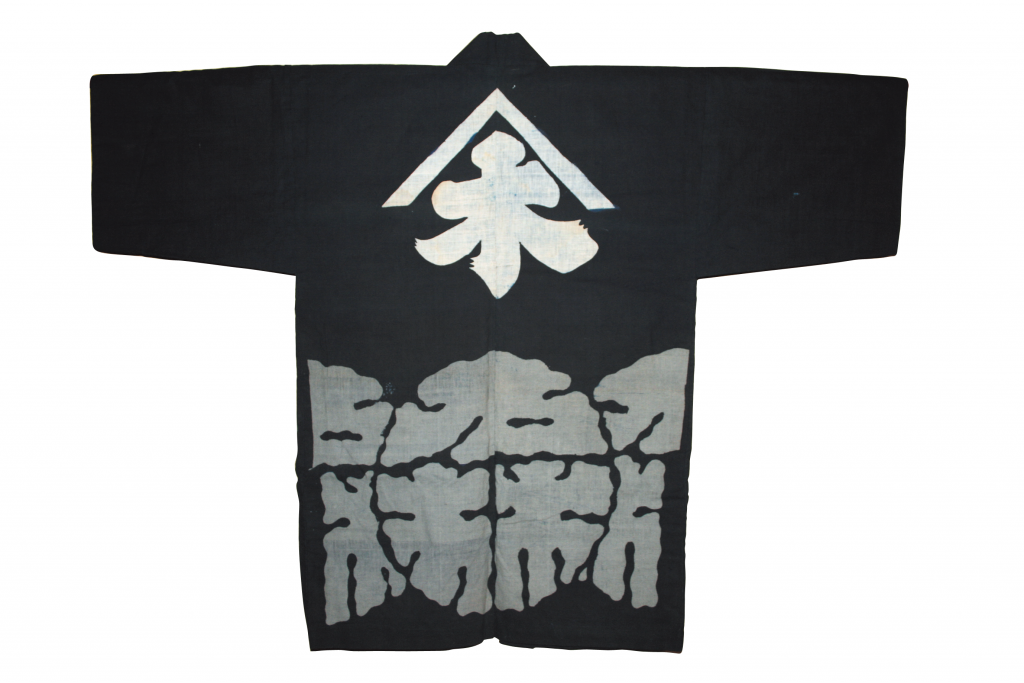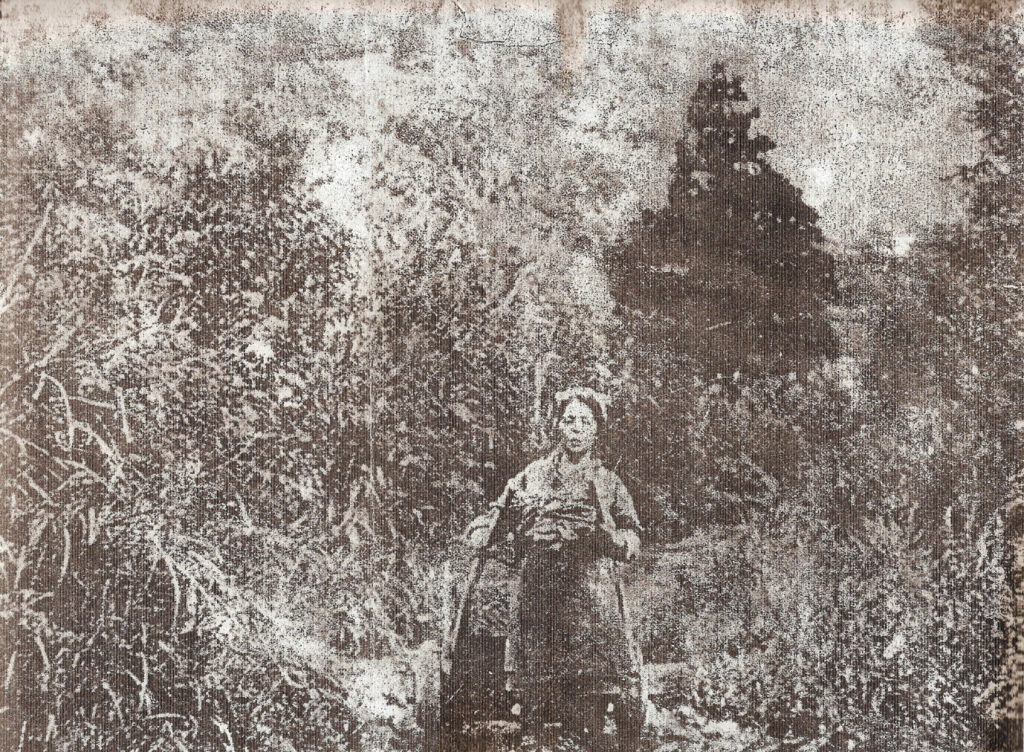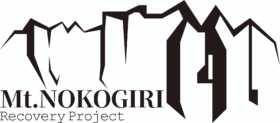
誇りに満ちた表情が印象的な石切職人たち(昭和40年代)
Ishikiri-shokunin with prideful expression is impressive. (the 40s of the Showa era)
のこぎり山の岩は、凝灰岩で出来ています。のこぎり山の凝灰岩(安房竹岡凝灰礫岩)は、「房州石」と呼ばれ、加工がしやすく耐火性があるため、江戸時代から昭和にかけて建築資材として盛んに使われました。資材として使われた房州石は、のこぎり山周辺のみならず、東京や横須賀、横浜など、東京湾をぐるりと囲む広い範囲に現存しています。のこぎり山の石切場跡は全国的にみても大規模なものです。先人たちの残してくれた「仕事場」と、「職人の心」は、私たちの大きな財産です。「働く」ということを改めて考えさせられます。
The rocks of Mt. Nokogiri consistof tuff. Mt. Nokogiri’s tuff (Awa-Takeoka tuff breccia) is called “Boshu Stone” which is easily worked and is fireproof so it was greatly useful as construction materials from Edo period to Showa era. Boshu Stone used as construction materials exists not only around Mt. Nokogiri area but also along Tokyo Bay wide area, Tokyo, Yokosuka, Yokohama and so on. Mt. Nokogiri quarry site is very large-scale in Japan.“The work site” and “Shokunin spirit” that predecessors had left for us is our possessions. It gets me to think that “what is to work” again.

芳家石店の印袢纏(しるしばんてん) 大正時代の石切職人たちが着たようです。藍染めで石屋の名と紋が印されています。
Hanten with a family crest of the Yoshike stone company Shokunin wore it in the quarry at Taisho Era.The name and the family crest are printed in indigo dyeing.

ねこ車で石材を搬出する女性(明治期と思われる)
Woman (thought to be the Meiji period) who carries out building stones by wheelbarrow.
